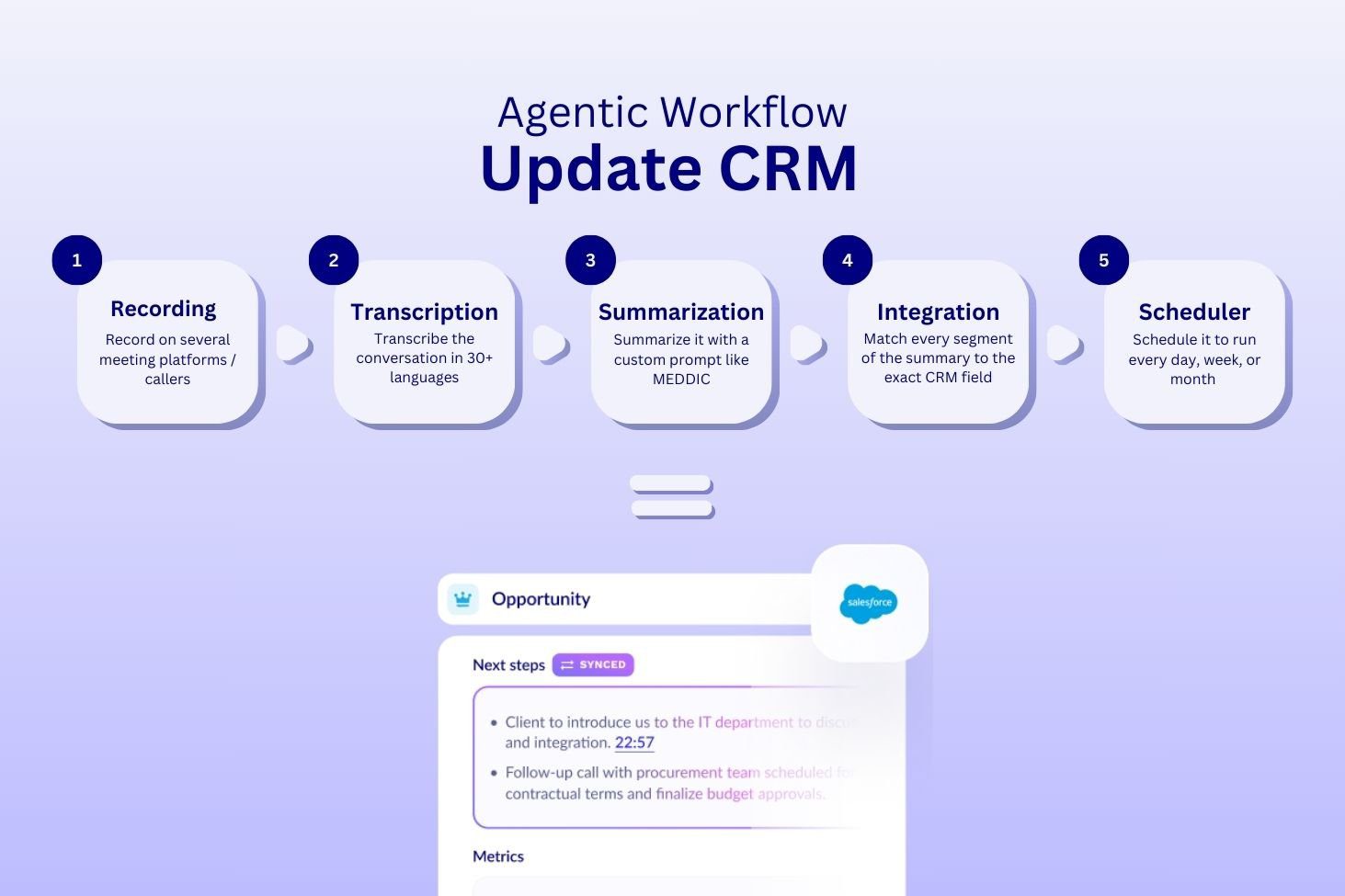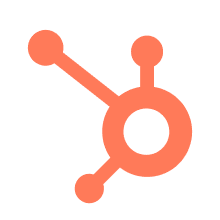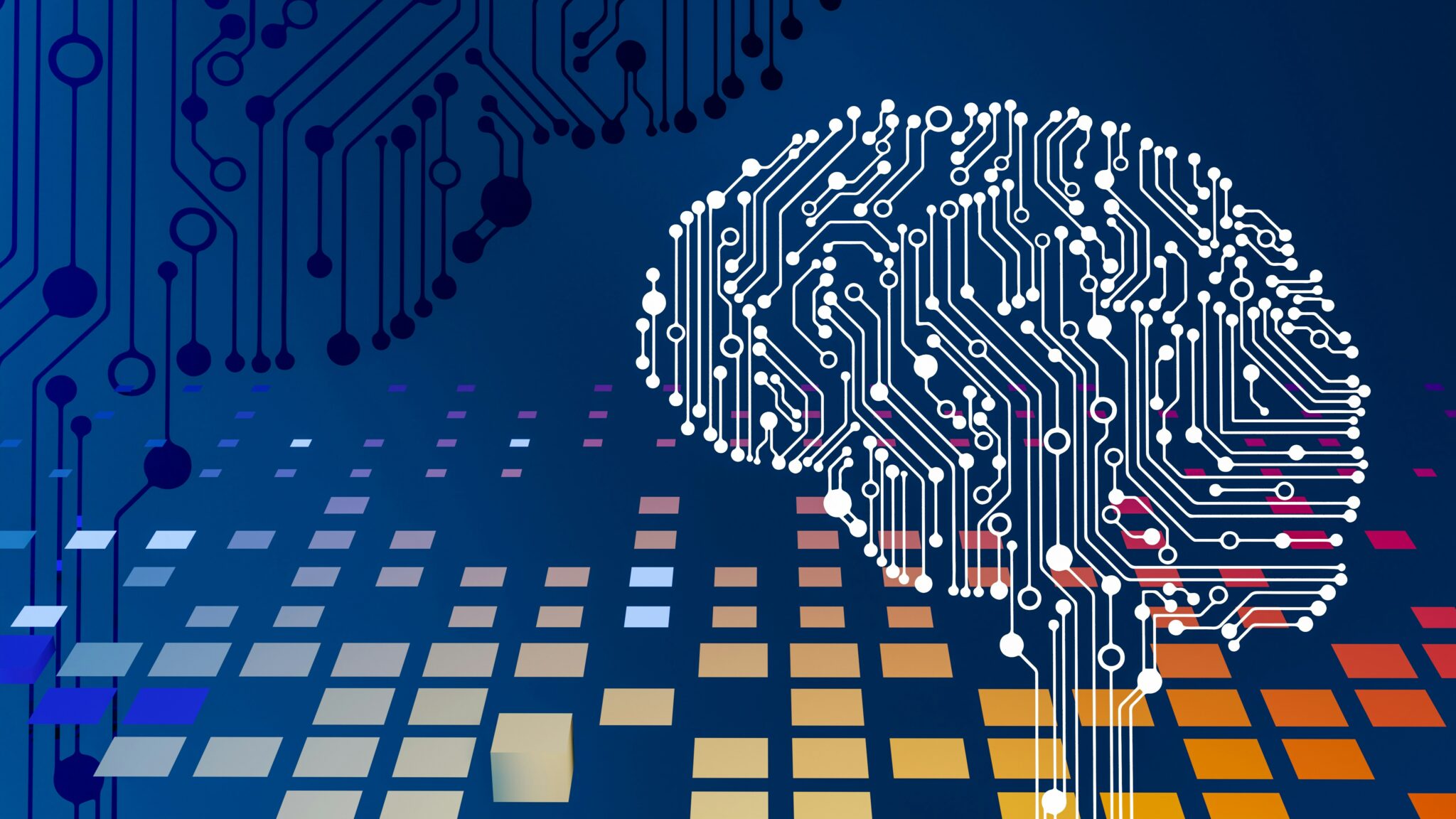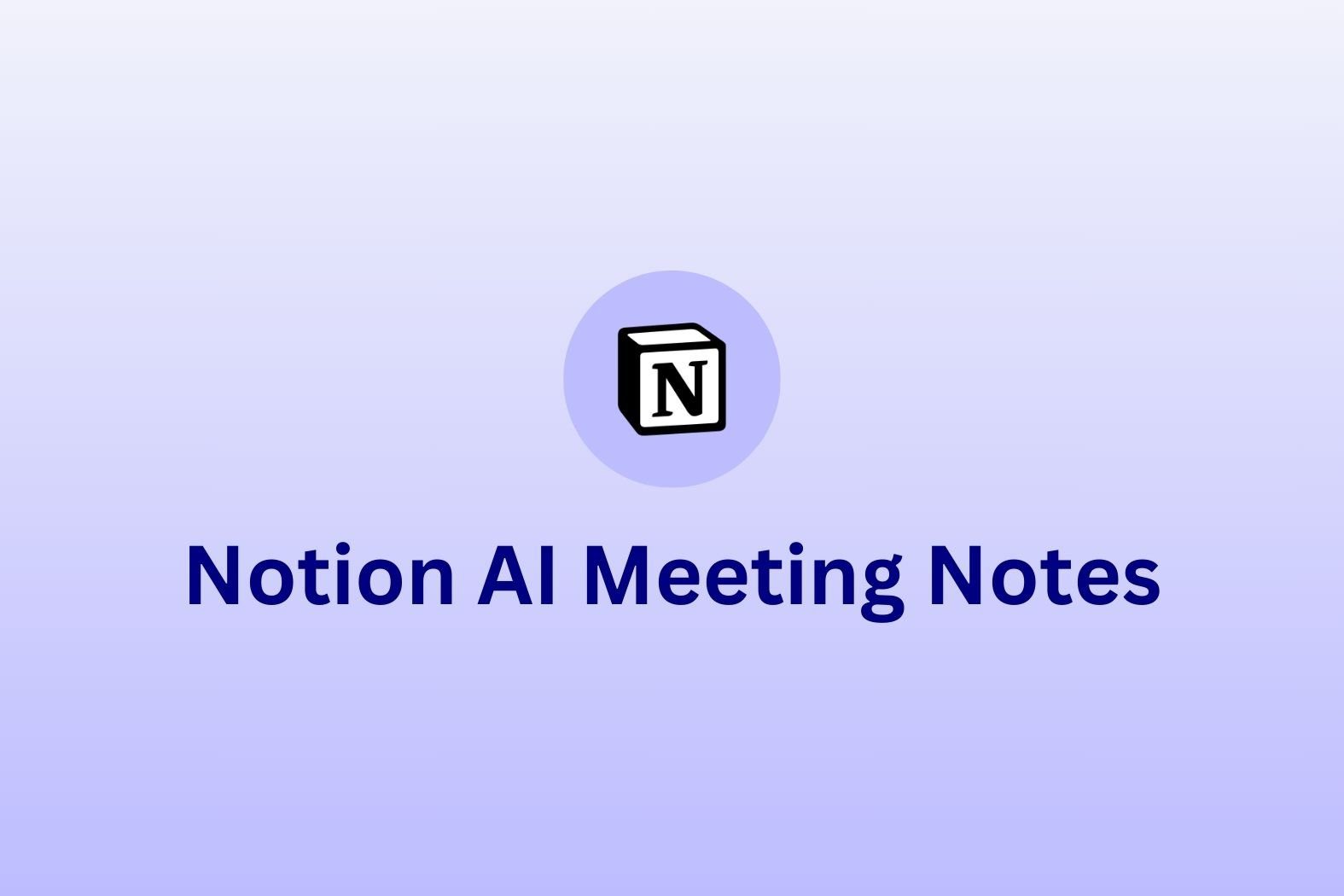An AI agentic framework is a system that enables AI agents to act with autonomy, adaptability, and decision-making capabilities. In comparison, traditional AI follows preset rules and cannot adapt to new situations or make complex plans. In short, these frameworks are like breathing life into your workflows so that AI completes the tedious tasks on your behalf.
These frameworks are especially significant in AI development as they are the guardrails that allow AI to operate without human intervention. Think of them as the train track and AI as the train. Once humans have built the track, the train can go back and forth with minimal input.
AI agentic frameworks go far deeper than just AI development however. Their ability to automate workflows seamlessly and make intelligent decisions on the fly is allowing them to transform entire industries. In 2025, you can already see it happening, but that’s just the tip of the iceberg.
Before we go any further, let’s take a deeper dive: what actually is an AI agentic framework?
What is an AI Agentic Framework?
Simply put, an AI agentic framework is a structured approach that allows AI systems to make decisions, plan actions, and execute tasks independently. Unlike traditional AI, which follows pre-defined rules or relies solely on statistical learning, agentic AI exhibits autonomy, adaptability, and contextual awareness.
Why Does it Matter?
The way we interact with technology is changing. AI agentic frameworks are crucial for building next-generation AI that leaves rigid rule-based models and standard machine learning for dust.
These systems enable AI to handle complex, dynamic environments, making them essential for applications like AI-powered assistants, autonomous robotics, and self-improving software agents.
Key Concepts
There are three key concepts to be aware of when thinking about AI agentic frameworks: autonomy, decision-making, and self-learning.
Basically, these frameworks support AI models that can operate independently, make decisions based on data that they have extracted themselves, and adapt and improve their abilities by analyzing past results.
1. Autonomy
AI agents act independently to achieve goals. They don’t need to rely on a human to prompt them to do something. They just act.
2. Decision-Making
AI agents can analyze vast swathes of data at lightning speed, empowering them to choose optimal actions. They weigh up the different options and make firm decisions quickly.
3. Learning and Adaptability
AI agents have the ability to refine their behavior over time by learning and adapting through experience. The more an AI agent is used, the smarter it becomes. It’s constantly self-analyzing and reviewing past actions to see where it can make things more efficient.
By integrating these principles, AI agentic frameworks are becoming more intelligent, self-sufficient systems that revolutionize industries from automation to customer service.
How Do AI Agentic Frameworks Work?
At its core, an AI agentic framework empowers AI to function more like autonomous decision-makers rather than passive tools. You could think of it as the first serious step towards self-aware AI. It acts independently, thinks for itself, continuously learns and adjusts its strategy to improve… The possibilities are endless.
By combining multiple advanced AI techniques, like deep learning, reinforcement learning, and symbolic reasoning, AI agentic frameworks create adaptable and goal-driven AI agents.
In short, AI agentic frameworks create AI agents that:
Govern Themselves. AI agents define their own goals and adjust strategies in response to environmental changes.
Are Contextually Aware. They interpret and react to shifting conditions in real-time.
Plan Multiple Steps Ahead. They develop structured approaches to problem-solving rather than reacting to inputs in isolation.
Interact and Collaborate. They work alongside other AI agents or humans, sharing information and refining tasks.
How Do AI Agents Execute Tasks?
To function effectively, agentic AI must follow a structured workflow that allows it to process information, make decisions, and execute actions in a coherent and intelligent manner. Here’s how they do it:
Perception & Data Processing
AI agents collect and interpret data from their environment using a combination of vision, audio, text, or sensor data. For example, an AI-powered self-driving car gathers data from cameras, LIDAR, GPS, and other sensors to understand its surroundings.
Similarly, an AI agent for meetings will digest the conversation, monitor the video to spot facial expressions and use it to identify tone and more nuanced emotions. If the meeting platform uses multi-meeting intelligence, like tl;dv, the AI will also be able to use previous calls as context, referring back to discussions, action points, and relationships from previous meetings.
Reasoning & Planning
Once data is processed, the AI uses various reasoning methods, such as predictive modeling, constraint-based logic, or deep reinforcement learning. These might sound complicated, but all you need to know is they use these methods to determine the best course of action.
An AI agent in project management, for example, may analyze team workflows, predict bottlenecks, and optimize resource allocation. They do this by leveraging historical project data, real-time progress tracking, and team performance metrics.
Decision Execution & Adaptation
Finally, the AI agent takes action based on its reasoning. Whether it’s executing a stock trade, recommending personalized content, or navigating an autonomous vehicle, the AI continuously refines its approach based on real-world results.
For instance, AI agents in sales can analyze customer interactions, predict which leads are most likely to convert, and tailor outreach strategies accordingly. Feedback loops and memory recall help optimize its future decisions, making it increasingly efficient and reliable over time.
Use Cases and Applications
There are various use cases for AI agentic frameworks. It presents such a revolutionary shift that you could feasibly find a use case for agentic AI anywhere. Here are the most popular industries where AI agentic frameworks are already starting to create big changes:
1. Customer Service
Gone are the days of useless chatbots that can’t even understand your request. AI agentic virtual assistants provide real-time, context-aware responses, reducing wait times and improving user satisfaction.
They can understand natural language, just as if you’re chatting with ChatGPT, though they can also understand issues on a much deeper level. When an AI agent for customer success encounters a problem, it can quickly source information from company policy, online articles, or past issue resolutions to fix it.
AI meeting assistants, like Otter.ai, Fireflies.ai, and tl;dv, transcribe conversations, summarize key points, and generate follow-up tasks. In a customer service setting, an AI meeting assistant can track recurring customer issues, highlight action items, and even suggest responses based on past interactions. Their chatbots can answer queries, schedule follow-ups, and provide contextual insights, ensuring seamless collaboration and improved customer support efficiency.
2. Data Analysis & Business Intelligence
Swift data analysis is what AI does best. It’s its bread and butter. It automates data processing, identifies patterns, and provides actionable insights to increase speed and efficiency for businesses.
To use AI meeting assistants as an example again, tl;dv can analyze multiple meetings across different teams, identifying recurring topics and generating automated reports. In customer success, this enables managers to track common pain points, monitor customer sentiment trends, and proactively address recurring issues before they escalate.
3. Process Automation
AI streamlines and automates repetitive workflows, improving efficiency and reducing human intervention. This is a life-saver for many people as it removes the need to manually perform tedious tasks.
For example, when a sales rep finishes a sales call, they usually have to fill out a CRM to manage customer records for their company. There aren’t many sales reps that enjoy this part of the job. They prefer talking to people, negotiating, and trying to close more sales.
However, with tl;dv’s AI agentic workflow, they can call one prospect after the next, content that their CRM will be filled out even more accurately than if they’d wasted the time to do it themselves. tl;dv’s AI automates this process by extracting meeting notes, insights, and summaries and importing them directly into your CRM after every single customer-facing call.

4. Software Development
AI assists in coding, debugging, and optimizing software engineering processes. This is a huge advancement that can cause innovation in many different areas. Coders can now use AI agents to save them time on the more tedious things, while no-coders can build things without learning a single line of code. Welcome to the future.
Github Copilot, OpenAI Codex, and Cursor suggest intelligent code completions, optimize functions, and even generate test cases, speeding up the development cycle.
5. AI-Powered Sales Optimization
AI enhances sales processes by automating lead scoring, personalizing outreach, and optimizing pricing strategies. It can understand your prospects and help you target them with more efficiency.
AI-driven sales assistants analyze customer interactions, predict purchase intent, and suggest personalized pitches based on behavioral insights. If these assistants have access to meeting intelligence, they can also offer objection handling tips and sales training.
Key Components of an AI Agentic Framework
Broadly speaking, an AI agentic framework is made up of four key parts: memory, planning, reasoning, and adaptability. In short, it can remember interactions, set goals for the future, weigh the pros and cons of a decision and take action, and learn through experience and self-analysis so it can do a better job next time.
Let’s take a closer look at each component individually:
1. Memory
AI agents retain and recall context across interactions, improving long-term efficiency. This allows AI to track progress, remember user preferences, and refine responses over time.
This makes it an incredible tool for customer-facing roles as it can remember customer preferences and personalize responses next time. An AI sales assistant could remind you of previous conversations with a prospect so that you can bring up relevant details and make the customer feel more valued.
2. Planning & Goal Setting
AI agentic frameworks use reinforcement learning and heuristic planning to create long-term strategies. This enables them to prioritize objectives, allocate resources efficiently, and dynamically adjust to evolving scenarios.
This dynamic approach to situations is what makes agentic AI stand out as a game-changer. You can prompt AI to understand your specific business model and it can create detailed plans for the future, adapting on the go if circumstances change.
3. Reasoning & Decision-Making
AI models assess multiple variables, weigh trade-offs, and optimize actions to achieve their goals. They employ advanced decision trees, probabilistic modeling, and logic-based frameworks to evaluate their options intelligently.
A system that can do this kind of work in a fraction of a second has clear value. It can be used to forecast sales, predict customer churn, and set realistic business targets.
4. Adaptability & Learning
Continuous learning through feedback loops ensures AI remains effective over time. This involves refining models based on new data, adjusting strategies in response to environmental changes, and improving performance through self-supervised learning.
An AI that can learn and adapt is an AI that can make a difference. In the past, if a system made a mistake, you’d need to reprogram it. Now, it effectively reprograms itself.
Bringing it All Together
When you have an AI agent that remembers past experiences, can plan for future ones, can make tough decisions on the fly by analyzing the data available, and then learn how to improve for next time, you can only imagine the amount of time it will save you.
This is what an agentic AI framework creates: a powerful AI assistant that never gets tired or bored. It can do all of the menial tasks on your behalf and maximize its potential for increased efficiency.
Challenges and Limitations
Despite their potential, AI agentic frameworks face significant challenges. From ethical concerns to security risks, AI isn’t a risk-free work revolution. There can be downsides:
Ethical Concerns
Ensuring AI operates within ethical boundaries is critical. Issues like privacy violations, unfair treatment, and accountability gaps must be addressed to foster trust in autonomous AI systems.
Not to mention, Goldman Sachs believes that AI will displace 300 million jobs by 2030. That’s just five years away… While it will surely create many more jobs in new fields that we are yet to comprehend, the ethical concern of AI replacing human workers is real.
Bias & Fairness
AI models can inherit biases from their training data, leading to discrimination or flawed decision-making. It’s only humans that program AI after all.
Strategies like bias audits, transparency protocols, and diverse data representation help mitigate this risk. It can never be truly eliminated though, just as it can’t be eliminated from a human.
Technological Constraints
Building truly autonomous AI requires advanced reasoning, contextual awareness, and adaptability, which are still technological hurdles. While AI is improving, it is far from human-like general intelligence.
Having said that, AI is advancing so quickly now that it outperforms humans in nearly all benchmarks. This doesn’t necessarily contradict the above technological hurdles, but it does underscore our need to design new tests to differentiate human intelligence from artificial intelligence.
Security Risks
Autonomous AI agents can be vulnerable to hacking, adversarial attacks, or manipulation. Strong cybersecurity measures, encryption, and constant monitoring are essential for safeguarding these systems.
It’s also a risk that OpenAI, the biggest AI company in the world, is actually completely closed source. It also notoriously broke copyright infringement on almost every piece of copyrighted material in existence and got away with it. Who knows what they’re doing with your data now.
Not to mention, just last week OpenAI reported that over 20 million user accounts had been hacked and their data listed for sale on the dark web. If your AI agents are compromised, it could be carnage.
Comparison with Traditional AI Models
Traditional AI follows predefined algorithms. It’s unable to make decisions by itself, adapt to new situations, or plan ahead. Agentic AI, on the other hand, takes things in a bold new direction. It offers:
Greater Autonomy. AI agents operate independently, requiring minimal human intervention while dynamically adjusting to changing conditions.
Improved Adaptability. These systems learn from experience, enabling them to refine strategies, adapt to evolving data, and improve performance over time.
More Complex Decision-Making. AI agents can plan, reason, and execute multi-step processes, making them highly effective in areas like supply chain management, personalized marketing, and AI-driven research.
AI Agentic RAG (Retrieval-Augmented Generation). By combining LLMs with real-time retrieval from vast datasets, agentic AI can provide accurate, contextually relevant insights and improve the quality of decision-making.
Here’s a table that makes it easier to understand the differences between AI agentic frameworks and traditional AI models:
Feature | AI Agentic Framework | Traditional AI |
Autonomy | Highly autonomous, can make independent decisions and adapt dynamically | Requires human intervention for major decisions |
Decision-Making | Goal-driven, capable of long-term strategic planning | Typically reactive, making decisions based on pre-programmed logic |
Learning Approach | Continuously learns and self-improves through interaction | Trained on static datasets, requires retraining for updates |
Flexibility | Can generalize across multiple tasks and environments | Specialized for specific tasks, struggles with generalization |
Adaptability | Adjusts to new data, environments, and goals in real time | Limited adaptability, requires manual tuning for changes |
Human Involvement | Minimal oversight needed; operates with human-like decision-making | Requires human monitoring and adjustments |
Task Execution | Can autonomously execute complex, multi-step workflows | Executes predefined tasks without adapting to new challenges |
How AI Agentic Frameworks Enhance Productivity
AI agentic frameworks streamline workflows by automating decision-making, reducing manual intervention, and optimizing complex tasks. It makes your life easier by taking care of the things you wish you didn’t have to do in the first place. It drives innovation this way, as it frees up your time to focus on tasks you’re more motivated for.
In fact, GenAI is poised to contribute between $2.6 trillion and $4.4 trillion annually to global GDP by 2030. The same study emphasizes that the future of GenAI is agentic, where AI agents collaborate in real-time to automate complex tasks and improve decision making.
Various industries have already started benefitting from this as businesses are able to operate more efficiently and effectively. Let’s take a look at three key ways that AI agentic frameworks enhance productivity:
1. Faster Task Execution
By delegating repetitive and time-consuming tasks to AI agents, businesses can accelerate workflow execution. For example, AI-powered customer service chatbots can handle thousands of inquiries simultaneously, reducing wait times and freeing up human agents for more complex issues.
In remote and asynchronous work environments, AI-powered meeting assistants can automatically transcribe, summarize, and extract key action points from discussions. They enable teams to stay aligned without having to spend hours reviewing notes.
2. Reduced Operational Costs
AI-driven automation reduces the need for manual labor in many tasks, leading to substantial cost savings. In industries that rely heavily on documentation and compliance, AI tools can streamline data entry, automate reporting, and ensure regulatory adherence with minimal human intervention. Basically, they’ll become your new best friends!
Similarly, businesses that depend on virtual collaboration can use AI to reduce the time and resources spent on administrative follow-ups. When the little things become automatic, they don’t drain your wallet.
3. Improved Accuracy and Efficiency
AI systems are programmed on large datasets and advanced algorithms to minimize human errors. As a result, they make more accurate decisions more often. For example, AI-powered meeting assistants ensure that key takeaways from discussions are captured and organized correctly, preventing misunderstandings and reducing the need for repeated discussions.
In legal and consulting firms, AI can assist in document review, contract analysis, and summarization, improving accuracy while freeing up professionals to focus on strategic tasks. Whenever data is involved, AI is a master. It can take enormous datasets and condense them into their core essence in seconds.
The Role of LLMs in Agentic AI Systems
Large Language Models (LLMs) play a crucial role in agentic AI systems, acting as the core reasoning and decision-making engine. Without LLMs, agentic AI wouldn’t be anywhere near the level it currently is. Here’s why LLMs are vital to agentic AI systems:
Natural Language Understanding. LLMs enable AI to interpret and generate human-like responses with nuanced comprehension. Without this, AI agents would be robotic and monotonous.
Context Retention. They allow AI to track interactions, maintain continuity, and improve performance over time through memory-enhanced learning. Remove LLMs from the equation and you get AI agents that aren’t able to retain information or self-improve.
Enhanced Decision-Making. They utilize vast knowledge bases, real-time data retrieval, and contextual reasoning to inform more intelligent and dynamic responses. If this were missing, AI agents would be far less knowledgeable.
Autonomous Problem-Solving. They can generate solutions to complex queries, adapting strategies based on user feedback and refining outputs through iterative learning. AI agents aren’t the same without this key feature.
Best AI Tools for Autonomous Workflows
AI-driven agentic frameworks enable automation that is autonomous, adaptive, and goal-oriented. Below, you can find some great tools categorized by industry, emphasizing their role in autonomous workflows.
Business and Productivity
In this section, you’ll find a whole bunch of AI tools that optimize workflows, meetings, and decision-making.
- tl;dv. It’s an AI meeting assistant that records, transcribes, and summarizes your meetings for free. Upgrade to unlock post-call AI agentic workflows where meeting notes can be synced with your CRMs in a heartbeat. Explore its multi-meeting intelligence for context-aware analysis across multiple calls at once.
- Fireflies. Another AI meeting assistant, Fireflies automates meeting notes, summarizes meeting discussions, and highlights action items to maintain accountability. It integrates with your CRM and other productivity tools too. Is quite limited on its free plan and user reviews point a finger at the availability of their support team. For more variety, check out the best AI agents for meetings.
- Reclaim. This tool is an AI-driven smart scheduling platform to optimize team meetings, deep work sessions, and breaks.
- ClickUp. This automates workflow generation, task prioritization, and document drafting. It can create for any type of work and helps you organize all your different tasks into a focused order.
Finance and Trading
AI agents can analyze markets, automate trading, and manage risks, making them an excellent addition to financial business models. Here are some examples of powerful AI tools for finance and trading:
- Kavout. Predict the stock market and automate trading with this powerful tool.
- AlphaSense. This AI financial research tool autonomously scans earnings calls, SEC filings, and news for insights.
- Numerai. It’s an AI hedge fund that crowdsources machine learning models for trading.
Marketing and Sales
Here, you’ll find AI agents for customer engagement, lead generation, and personalization. This area is blowing up with AI agents recently, so it’s a wise idea to keep up with the competition. Here are some of the best tools to take a look at:
- Jasper AI. This tool provides AI-powered content generation for blogs, emails, and ads.
- Drift. It’s an AI conversational marketing tool that autonomously qualifies leads and books meetings. It can save your team hours each week.
- People.ai. This AI-driven revenue intelligence platform is built for sales teams. It’s a customized sales platform that helps you scale your business.
Legal and Compliance
If you’re looking for AI-powered contract analysis, legal research, and workflow automation, you’ll need one of these epic tools:
- Harvey AI. Get your AI assistant for legal research, contract analysis, and case predictions.
- Kira Systems. It’s an AI contract review tool that automates your due diligence.
- Evisort. It’s an AI contract lifecycle management and compliance monitoring tool that helps save your compliance team time. It also boosts efficiency.
The Future of AI Agentic Frameworks

With artificial intelligence, the future is still being written. Will we see a Terminator-style revolution, a Matrix-esque dystopia, or something more positive for humankind?
Either way, there are a few things we can expect for sure:
Stronger Regulatory Frameworks
As a new technology, AI has very few regulations. Companies are racing to create the next big breakthrough, but no one is stepping up to regulate the development. The fear lies in the fact that there are multiple competitors from different businesses and different countries all racing to achieve the same goal: if regulations appear in one place, that doesn’t curtail development in another.
Stronger regulations would enable AI agent frameworks to be developed in a more ethical way. We can only assume that this will become a more pressing issue as time ticks by.
Greater Integration with Quantum Computing
Advanced problem-solving will reach entirely new levels when quantum computing is developed enough to combine with AI. Instead of ordinary binary – ones or zeros – quantum computing uses quantum particles to operate as ones and zeros simultaneously.
The rate at which quantum computing can solve problems is mind-boggling. The most powerful current quantum computer can outperform the most powerful supercomputer in the world by 100 trillion times in a specific experiment! That’s an incomprehensible number. To try and put it in perspective, if you counted from 1 to 100 trillion, it would take you about 3 million years.
Improved Human-AI Collaboration
As time goes by, AI will understand humans on a deeper level. It remains to be seen whether they will ever fully replicate emotions – or whether that’s a good thing. However, it’s pretty clear that the gas pedal is to the floor when it comes to AI development. What this means for us is stronger personalization, better understanding, and collaborative creativity.
If larger industries adopt the use of AI on a broad scale, we could see dramatic global changes in a very short space of time. For instance, AI-human teams can revolutionize medical research, personalized treatment, and public health solutions.
How to Implement an AI Agentic Framework in Your Business
If you’re convinced as to the power of AI, you’ll want to implement it in your business as quickly as possible. To integrate an AI agentic framework effectively:
Assess Your Needs. Determine which tasks benefit most from automation. Use it where it’s most effective. Think: data analysis, task automation, and accuracy and efficiency.
Choose the Right AI Models. Select AI solutions that align with your business needs. If you want to automate post-call workflows, you’ll use an AI meeting assistant like tl;dv. Other problems call for other solutions.
Integrate AI with Existing Systems. Ensure seamless communication between AI and your existing business processes. If possible, find a way to knit your tools together into a cohesive thread. This will help when it comes to automation.
Implement Feedback Loops. Ensure AI systems learn and improve over time. This way, your system can evolve over time.
Establish Guardrails & Human Oversight. Define ethical considerations and intervention points. You want to maintain user privacy and security. It’s important that a failsafe is in place to take control if something goes wrong.
- Monitor and Optimize. Regularly assess AI performance and make adjustments where necessary.
By leveraging AI agentic frameworks, businesses can improve decision-making, speed up task execution, and drive innovation in a competitive digital landscape.
Get Started With AI Agentic Frameworks Today!
AI agentic frameworks are the lifeblood that allow AI agents to operate as they do. By employing AI agentic frameworks, you’re taking your business to the next level. More importantly, you’re positioning yourself and your business as industry leaders. Those that fail to make the switch to AI agentic frameworks will likely be left behind as results compound.
There are plenty of free agentic tools available for you to try out. tl;dv, for example, has a freemium plan that unlocks unlimited meeting recordings, transcriptions, and summaries, as well as a whole bunch of limited AI features. Sign up and get started with your AI agentic journey today.





